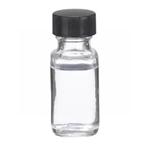How to use (R)-1-phenylethylamine correctly
Introduction
(R)-1-phenylethylamine is an organic compound with the molecular formula C8H11N. A series of o-xylylene-type 1,4-amino alcohols, synthesized from (R)-1-phenylethylamine, were used as chiral ligands for the enantioselective addition of diethylzinc to benzaldehyde[1].

Picture 1 (R)-1-phenylethylamine reaction
First-aid
Inhalation: If inhaled, remove patient to fresh air.
Skin Contact: Remove contaminated clothing and rinse skin thoroughly with soap and water. If you feel unwell, seek medical attention.
Eye contact: Separate eyelids and rinse with running water or normal saline. Get medical attention immediately.
Ingestion: Rinse mouth, do not induce vomiting. Get medical attention immediately.
Advice for protecting rescuers: Move the patient to a safe location. Consult a doctor.
Fire-fighting measures
Extinguishing Media: Fire extinguishing with water mist, dry powder, foam or carbon dioxide. Avoid using direct water to put out the fire, which may cause splashes of flammable liquids and spread the fire.
Fire fighting precautions and protective measures
Firefighters must wear air-carrying respirators and full-body firefighting suits to put out the fire in the upwind direction. Move the container from the fire area to an open area as much as possible. Containers in fire must be evacuated immediately if they have discolored or emit sound from safety pressure relief devices. Isolate the accident scene and prohibit unrelated persons from entering. Contain and treat fire water to prevent environmental pollution.
Leak emergency treatment
Worker precautions, protective equipment and emergency procedures: It is recommended that emergency responders wear air-carrying respirators, anti-static clothing, and rubber oil-resistant gloves. Do not touch or step over spillage. All equipment used during work should be grounded. Cut off sources of leaks as much as possible. Eliminate all ignition sources. The warning area is delineated according to the influence area of liquid flow, vapor or dust diffusion, and unrelated personnel are evacuated to the safe area from the crosswind and upwind directions.
Environmental protection measures
Contain spills and avoid polluting the environment. Prevent spills from entering sewers, surface water and groundwater. Methods of containment and clean-up of spilled chemicals and disposal materials used: Small spills: Collect spilled liquids in airtight containers as much as possible. Absorb with sand, activated carbon or other inert material and transfer to a safe place. Do not flush into sewers. Large spills: Construct dikes or dig pits for containment. Close the drain. Cover with foam to inhibit evaporation. Transfer it to a tanker or a special collector with an explosion-proof pump, and recycle it or transport it to a waste disposal site for disposal.
Operation precautions
Operators should be specially trained and strictly abide by the operating procedures. Operation and disposal should be carried out in a place with local ventilation or general ventilation facilities. Avoid eye and skin contact and avoid breathing vapor. Keep away from fire and heat sources, and smoking is strictly prohibited in the workplace. Use explosion-proof ventilation systems and equipment. If canning is required, the flow rate should be controlled, and there should be a grounding device to prevent the accumulation of static electricity. Avoid contact with incompatible substances such as oxidants. When handling, it should be lightly loaded and unloaded to prevent damage to packaging and containers. Empty containers may be harmful residues. Wash hands after use and prohibit eating or drinking in the workplace. Equipped with the corresponding variety and quantity of fire fighting equipment and leakage emergency treatment equipment.
Storage precautions
Store in a cool, ventilated warehouse. It should be stored separately from oxidants, acids, and edible chemicals, and should not be mixed. Keep container tightly closed. Keep away from fire and heat sources. The warehouse must be equipped with lightning protection equipment. The exhaust system should be equipped with a grounding device to remove static electricity. Use explosion-proof lighting and ventilation settings. The use of spark-producing equipment and tools is prohibited. Storage areas should be equipped with emergency release equipment and suitable containment materials.
Reference
1 Asami M, Miyairi N, Sasahara Y, et al. Enantioselective addition of diethylzinc to aldehydes catalyzed by (R)-1-phenylethylamine-derived 1, 4-amino alcohols[J]. Tetrahedron, 2015, 71(38): 6796-6802.
);You may like
See also
Lastest Price from (R)-(+)-1-Phenylethylamine manufacturers

US $0.00/KG2024-04-30
- CAS:
- 3886-69-9
- Min. Order:
- 1KG
- Purity:
- 99%
- Supply Ability:
- 2000MT

US $13000.00-12900.00/tons2024-04-30
- CAS:
- 3886-69-9
- Min. Order:
- 10tons
- Purity:
- 99%
- Supply Ability:
- 1000tons


